




PLAN YOUR VISIT TO JIM CORBETT

JUNGLE SAFARI
Welcome to Jim Corbett Uttarakhad, here you can book online Jeep safari, canter safari and night stay hotel/resort in nearby are of corbett. We provide jeep for six different zones of the Jim Corbett park namely, Bijrani Zone , Jhirna Zone, Dhikala Zone, Dhela Zone, and Durgadevi Zone. Each zones have a healthy population of tigers, Elephants, Spotted Deer (Chital or Cheetal) and wildlife sightings are reported more or less the same. You can book a gypsy for visiting in jungle by our company.
NIGHT STAY AT CORBETT
Welcome to Jim Corbett Uttarakhad, here you can book online Jeep safari, canter safari and night stay hotel/resort in nearby are of corbett. We provide jeep for six different zones of the Jim Corbett park namely, Bijrani Zone , Jhirna Zone, Dhikala Zone, Dhela Zone, and Durgadevi Zone. Each zones have a healthy population of tigers, Elephants, Spotted Deer (Chital or Cheetal) and wildlife sightings are reported more or less the same. You can book a gypsy for visiting in jungle by our company.
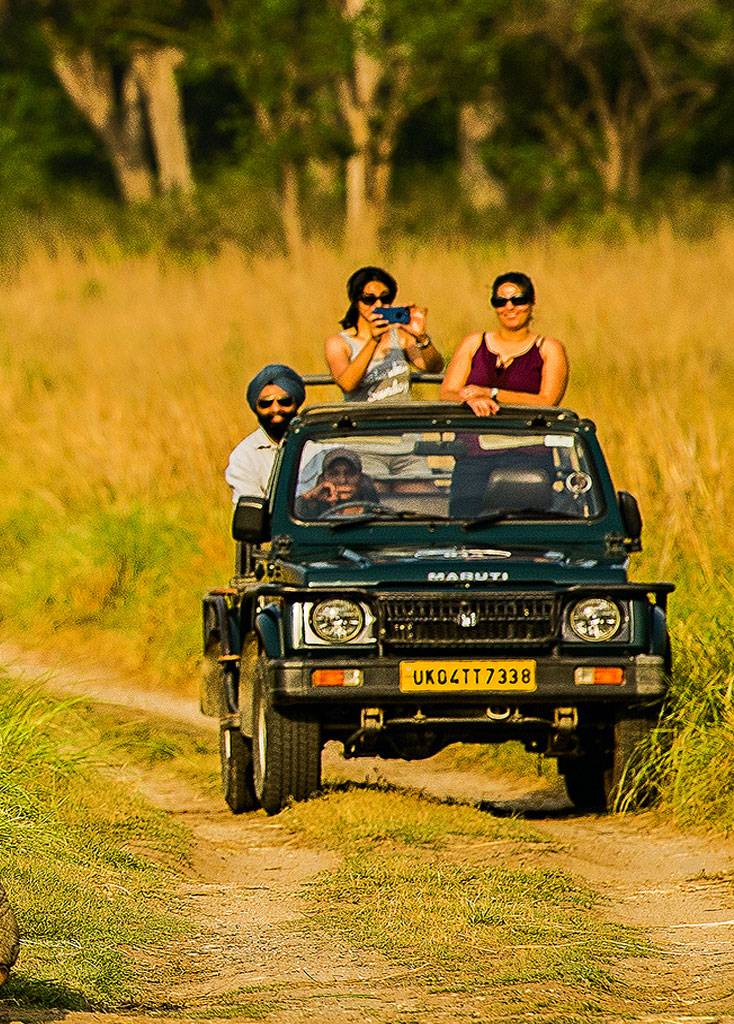
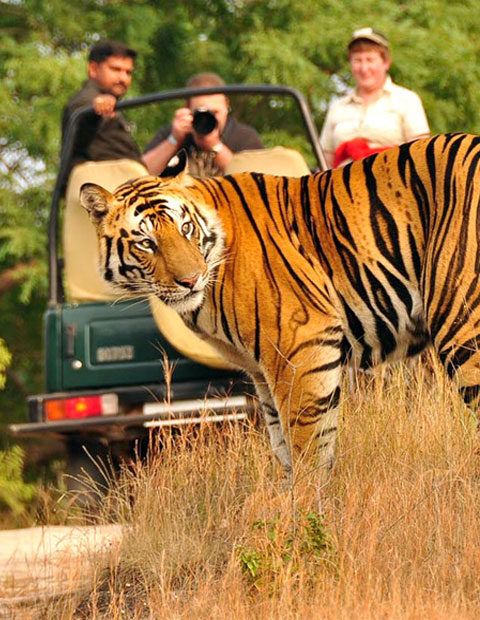
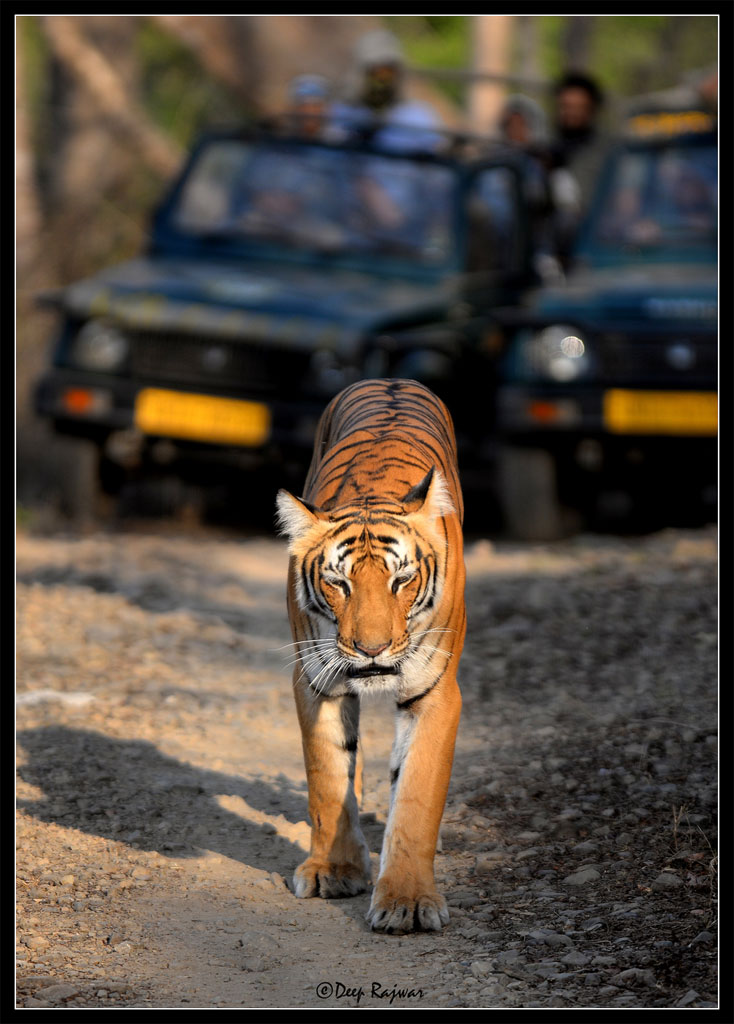
Corbett Safari Booking
If you’re planning an exciting wildlife adventure in the heart of nature, look no further than Jim Corbett Safari Booking . Jim Corbett, Uttarakhand offering an unparalleled experience in the realm of wildlife. Jim Corbett National Park is renowned for its diverse flora and fauna, captivating landscapes, and thrilling wildlife encounters. The safari booking process is straightforward and allows you to choose from various safari options, such as Jeep Safari, Canter Safari, and Elephant Safari, each providing a unique perspective of the wilderness. Led by experienced guides, these safaris offer an opportunity to spot majestic tigers, elusive leopards, graceful deer, and a myriad of bird species in their natural habitat. Jim Corbett Safari Booking promises an unforgettable journey into the wilderness, leaving you with cherished memories and a deep appreciation for the enchanting beauty of nature.
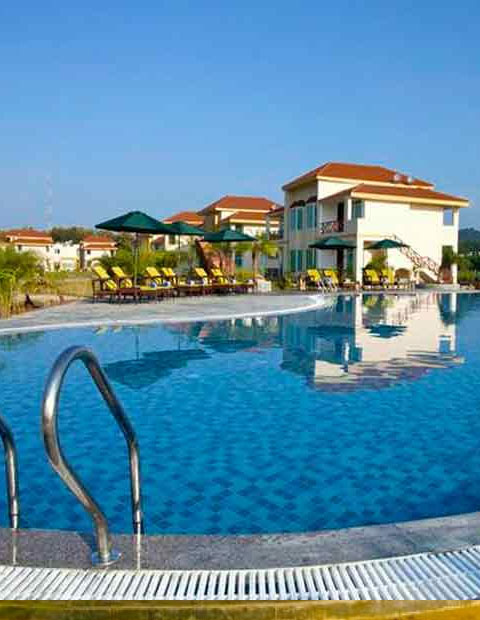
Night Stay Booking
For an immersive and unforgettable experience in the wilderness of Jim Corbett, Uttarakhand, Night Stay Booking by Jim Corbett offers a perfect opportunity to connect with nature like never before. Nestled amidst the serene surroundings of the national park, the night stay accommodations promise a tranquil escape from the bustling city life. From luxurious resorts to cozy forest lodges, there are various options to suit every traveler’s preferences and budget. As the sun sets and the jungle comes alive, the night stay experience allows you to embrace the sounds of the wilderness and witness nocturnal creatures in action. Whether you choose to camp under the starry sky or stay in comfortable lodgings, Night Stay Booking by Jim Corbett Uttarakhand ensures a magical encounter with nature’s wonders and a chance to create lasting memories with family and friends. Prepare to be captivated by the enchanting ambiance of the jungle and the thrill of being in close proximity to the wildlife that calls this paradise home.
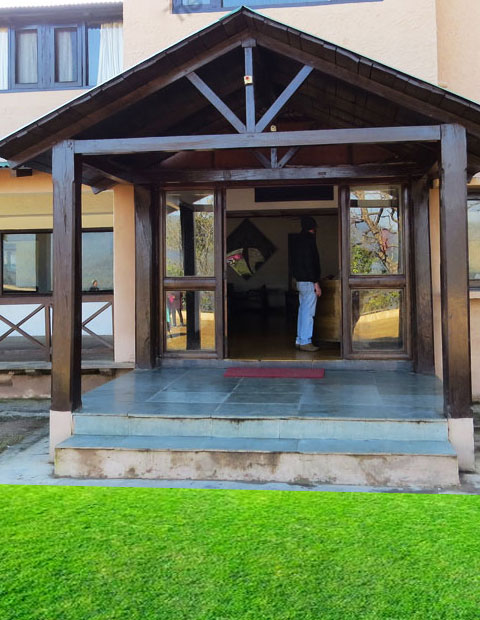
Dhikala Lodge Booking
Nestled within the lush expanse of Jim Corbett National Park, Dhikala Forest Lodge Booking by Jim Corbett Uttarakhand offers a truly immersive and extraordinary wildlife experience. Situated amidst the breathtaking landscapes of the park, Dhikala Forest Lodge provides guests with a unique opportunity to stay in the heart of the wilderness. The lodge’s rustic charm blends harmoniously with its natural surroundings, creating an ambiance that is both serene and adventurous. From the comfort of your room, you can witness the beauty of the jungle and catch glimpses of wildlife roaming freely. As the sun rises, embark on thrilling jeep safaris or elephant safaris to explore the diverse flora and fauna that call this park their home. Dhikala Forest Lodge is not just a place to stay; it’s an opportunity to connect with nature on a deeper level, creating cherished memories that will last a lifetime. Whether you are an avid wildlife enthusiast or a nature lover seeking tranquility, Dhikala Forest Lodge Booking promises an unforgettable journey into the heart of India’s wilderness.
ABOUT JIM CORBETT UTTARAKHAND
Welcome to the realm of wilderness and natural splendor – Jim Corbett Uttarakhand. We take immense pride in being the torchbearer of preserving the ecological treasures and promoting responsible tourism in the spectacular region of Jim Corbett National Park. As a leading organization in the realm of wildlife conservation and eco-tourism, we are dedicated to providing our guests with unparalleled experiences that foster a deep connection with nature and contribute to the preservation of this pristine paradise.
Our Vision
At Jim Corbett Uttarakhand, our vision is to create a harmonious blend between human activities and nature’s thriving ecosystem. We aspire to be the epitome of sustainable tourism, demonstrating that one can experience the unparalleled beauty of the wild without causing harm to the environment. We envision a future where generations to come can relish the wonders of Jim Corbett National Park in all its splendor.
Our Mission
Our mission is twofold – to offer visitors an authentic and immersive encounter with the wilderness while instilling a sense of responsibility towards wildlife and nature. We strive to protect and conserve the diverse flora and fauna, ensuring the ecological balance of this natural habitat. Additionally, we aim to empower the local communities and foster awareness about conservation, leaving a positive impact on the lives of people residing in and around the park.
The Legacy of Jim Corbett
Named after the iconic hunter-turned-conservationist, Edward James Corbett, the Jim Corbett National Park is a living testament to his passion for preserving wildlife. Jim Corbett, affectionately known as “Carpet Sahib” by the locals, played a pivotal role in establishing this park in 1936 as Hailey National Park, the first national park in India. His tireless efforts in hunting down man-eating tigers that were terrorizing local communities eventually transformed him into a fervent advocate for conservation.
Inspired by Jim Corbett’s legacy, our organization takes forward his vision and commitment to safeguarding the wilderness and its inhabitants. We strive to carry his torch of conservation and share the ethos of respecting and coexisting with nature with all our guests.
Our Commitment to Responsible Tourism
We believe that tourism can serve as a potent tool for conservation and community development. Our commitment to responsible tourism drives every aspect of our operations. From minimizing our carbon footprint to supporting local livelihoods, we aim to leave a positive and sustainable impact on the region.
1. Conservation Efforts
The heart of our endeavors lies in safeguarding the biodiversity of Jim Corbett National Park. Our team of dedicated conservationists works tirelessly to protect the delicate ecosystem and the numerous species that call this sanctuary home. We collaborate with park authorities, research institutions, and NGOs to formulate and implement conservation strategies that mitigate threats to wildlife and their habitats.
2. Eco-friendly Practices
Recognizing the fragility of the environment, we ensure our activities and facilities adhere to strict eco-friendly standards. Our lodges and camps are designed to blend seamlessly with nature, utilizing renewable energy sources and minimizing waste generation. We promote the use of biodegradable products and implement efficient waste management practices to reduce our impact on the environment.
3. Sustainable Tourism
We advocate for sustainable tourism practices that limit the number of visitors and their activities within the park. Our safari tours follow designated routes, ensuring minimal disruption to the natural behavior of wildlife. By adhering to ethical guidelines and promoting responsible behavior, we foster a culture of conservation among our guests.
4. Community Engagement
We firmly believe that sustainable conservation can only be achieved by uplifting local communities. We actively engage with nearby villages, supporting educational initiatives, healthcare programs, and skill development workshops. Our commitment to empowering locals ensures that they become stakeholders in the preservation of their natural heritage.
Our Services
1. Safari Adventures
Embark on an enthralling safari adventure through the lush forests of Jim Corbett National Park. Our expert guides take you on Jeep Safaris, Canter Safaris, and Elephant Safaris, offering unique opportunities to witness the majesty of the wilderness up close. As you explore the diverse habitats, including dense forests, grasslands, and riverine belts, prepare to be captivated by the untamed beauty of nature.
2. Night Stay Accommodations
Experience the magic of a night in the wilderness with our exquisite range of night stay accommodations. Choose from luxury resorts, forest lodges, and eco-friendly campsites, each providing a distinct experience of the natural surroundings. Fall asleep to the soothing sounds of the jungle and wake up to the melodious songs of birds, for an unforgettable rendezvous with nature.
3. Wildlife Photography
For photography enthusiasts, our wildlife photography tours offer a chance to capture breathtaking moments of the park’s inhabitants. Accompanied by seasoned photographers, you will learn the art of wildlife photography while respecting the well-being of the wildlife.
4. Birdwatching Excursions
Embark on an avian adventure with our birdwatching excursions, designed for bird lovers and ornithologists alike. The park boasts an impressive array of resident and migratory bird species, making it a haven for birdwatching enthusiasts.
5. Nature Walks and Treks
Immerse yourself in the tranquility of nature with our guided nature walks and treks. Explore the hidden gems of the park, including serene riverbanks, cascading waterfalls, and captivating viewpoints that offer stunning vistas of the surrounding landscape.
Our Team
The backbone of Jim Corbett Uttarakhand is our team of passionate individuals who share a deep reverence for nature. Comprising naturalists, conservationists, safari guides, and hospitality experts, our team endeavors to create an unforgettable experience for every guest. Their wealth of knowledge about the flora and fauna of the region, as well as their dedication to conservation, enriches every safari and interaction with the wild.
Jeep Safari Zone in Jim Corbett National Park:
Jim Corbett National Park, located in the picturesque state of Uttarakhand, offers a myriad of thrilling wildlife experiences through its various Jeep Safari Zones. Each zone has its unique charm, diverse landscapes, and an abundance of wildlife species, making it a paradise for nature and wildlife enthusiasts. Let’s delve into the details of all the Jeep Safari Zones in Jim Corbett:
1. Dhikala Zone: Dhikala is the largest and most popular zone in Jim Corbett National Park. Situated in the heart of the park, this zone offers a breathtaking landscape with vast grasslands, meandering rivers, and dense Sal forests. The chances of spotting Bengal tigers and herds of elephants are relatively high in this zone. Dhikala Zone is also famous for its mesmerizing sunsets and the picturesque Ramganga River flowing through it.
2. Bijrani Zone: Known for its diverse flora and fauna, Bijrani Zone is a haven for nature lovers and wildlife photographers. It boasts a rich variety of avian species, making it a paradise for birdwatchers. The lush forest and open grasslands provide a perfect habitat for tigers, elephants, deer, and several other wildlife species. The safari experience in Bijrani is an enchanting journey through nature’s bounty.
3. Jhirna Zone: Jhirna is another prominent zone for Jeep Safaris in Jim Corbett National Park. It remains open throughout the year, offering visitors an opportunity to explore the wilderness even during the monsoon season. The zone is characterized by its scrubland and dense vegetation, creating a unique habitat for a diverse range of wildlife, including sloth bears, leopards, and deer species.
4. Durga Devi Zone: Durga Devi Zone is located in the northeastern part of the park and is less frequented compared to the other zones. The rugged terrain and the presence of the Ramganga River make it an idyllic setting for adventurous Jeep Safaris. This zone is famous for its picturesque landscapes, the historic Durga Devi Temple, and sightings of majestic elephants and tigers.
5. Sitabani Buffer Zone: Sitabani Zone, also known as the Sitabani Buffer Zone, is located outside the core area of the national park. It offers a different experience as it allows tourists to enjoy Jeep Safaris even without a permit. The zone is revered for its spiritual significance, and visitors can explore the Sitabani Temple and a forest rest house. It is an excellent spot for birdwatching and observing various wildlife species.
6. Dhela Zone: Dhela Zone is the latest addition to the Jeep Safari Zones in Jim Corbett National Park. It is known for its diverse ecosystems, including grasslands, riverine belts, and dense forests. The zone offers sightings of elephants, leopards, and various bird species. Dhela is ideal for those seeking a more tranquil and less crowded safari experience.
Important Tips for Jeep Safari:
- Jeep Safaris are conducted in the morning and afternoon, and the best time for wildlife sightings is during the early hours and late afternoon.
- It is advisable to book safari permits in advance, especially during the peak tourist seasons, as the number of vehicles allowed inside the park is limited.
- Follow the instructions of the safari guide and maintain silence during the safari to increase the chances of spotting wildlife.
- Carry binoculars, cameras, and water bottles to enhance your safari experience.
Exploring the Jeep Safari Zones in Jim Corbett National Park is an exhilarating journey into the heart of the wild. Each zone offers its unique allure and wildlife encounters, ensuring that every visitor leaves with cherished memories and a deep appreciation for the wonders of nature.
Jeep Safari Price - Jim Corbett Uttarakhand
| Jeep Safari Zone | Indian Nationals (INR) | Foreign Nationals (USD) |
|---|---|---|
| Dhikala Zone | 55,00 | $95 |
| Bijrani Zone | 55,00 | $95 |
| Jhirna Zone | 55,00 | $95 |
| Durga Devi Zone | 1,500 | $30 |
| Sitabani Buffer Zone | 55,00 | $95 |
| Dhela Zone | 55,00 | $95 |
Jim Corbett Safari Timings
| Zone | Morning Safari | Afternoon Safari |
|---|---|---|
| Dhikala Zone | 6:00 AM to 10:00 AM | 2:00 PM to 6:00 PM |
| Bijrani Zone | 6:00 AM to 10:00 AM | 2:00 PM to 6:00 PM |
| Jhirna Zone | 6:00 AM to 10:00 AM | 2:00 PM to 6:00 PM |
| Durga Devi Zone | 6:00 AM to 10:00 AM | 2:00 PM to 6:00 PM |
| Sitabani Buffer Zone | 6:00 AM to 10:00 AM | 2:00 PM to 6:00 PM |
| Dhela Zone | 6:00 AM to 10:00 AM | 2:00 PM to 6:00 PM |
Jim Corbett Safari Zones and Entry Gates
| Zone | Entry Gate |
|---|---|
| Dhikala Zone | Dhangarhi Gate |
| Bijrani Zone | Amdanda Gate |
| Jhirna Zone | Jhirna Gate |
| Durga Devi Zone | Durga Devi Gate |
| Sitabani Buffer Zone | Sitabani Gate |
| Dhela Zone | Dhela Gate |
Jim Corbett Distance from Popular Cities
| City | Distance (Approx.) |
|---|---|
| Delhi | 240 km |
| Dehradun | 200 km |
| Haridwar | 180 km |
| Rishikesh | 210 km |
| Nainital | 66 km |
| Ranikhet | 90 km |
The Magical Landscape Of Corbett Is Well Known And Fabled For Its Tiger Richness
Jim Corbett National Park is a forested wildlife sanctuary in northern India’s Uttarakhand State. Rich in flora and fauna, it’s known for its Bengal tigers. Animals, including tigers, leopards and wild elephants, roam the Dhikala zone.

Frequently Asked Questions (FAQs)
Questions & Answers
Below you’ll find a selection of frequently asked question that may be helpful. If you have any more questions, please don’t hesitate to contact us!
Which safaris are more trustworthy Jeep Safari or Canter Safari ?
Both types of jungle safaris are immeasurable but there are some differences.
There are seven zones of jeep safari to roam but only one zone in canter safari. Jeep Safari is great..
How do I reach Jim Corbett Park?
By Road: Delhi-Moradabad-Kashipur-Ramnagar
By Train: Delhi-Moradabad-Kashipur-Ramnagar (Ramnagar is the nearest railway station)
By Air: Dehradun and Delhi are the nearest operational airports.
Regular flights are also being proposed from the nearby Pantnagar Airport in Udham Singh Nagar District.
What is the most suitable time to see the Tiger?
Four hours are given for the jungle safari of both sessions. In these four hours, one hour which has the most important to see the tiger is from six o’clock in the morning to seven o’clock in the morning, from six o’clock in the evening to seven o’clock in the evening.
What is the best time to visit Jim Corbett Park?
All seasons across the year have their own charm for wildlife lovers.
When does Jim Corbett Park close?
The closing time of Jim Corbett Park is from 1 July to 15 October, but during this time only five out of seven zones are closed and two zones are open throughout the year.
Regions that remain closed for five months: Dhikala, Durgadevi.
Regions that remain closed for four months: Bijrani, Ringora, and sitavani
Regions that remain open throughout the year: Jhirna and Dhela.
Jim Corbett National Park: A Wilderness Haven in Uttarakhand
Nestled in the heart of the enchanting state of Uttarakhand, Jim Corbett National Park stands as a testament to India’s commitment to wildlife conservation and natural preservation. Spanning across the foothills of the majestic Himalayas, this iconic national park is a haven for nature enthusiasts, wildlife lovers, and adventure seekers alike. Established in 1936 as Hailey National Park, it was later renamed in honor of the renowned hunter-turned-conservationist, Edward James Corbett, whose legacy continues to inspire generations to protect and cherish the natural treasures that abound within this wilderness.
Geography and Biodiversity
Jim Corbett National Park sprawls across an expansive area of approximately 520 square kilometers, encompassing diverse landscapes that vary from dense forests to grasslands, riverine belts, and hilly terrains. Situated in the Nainital and Pauri Garhwal districts of Uttarakhand, the park is bisected by the Kosi and Ramganga rivers, further adding to its scenic beauty.
The park’s remarkable biodiversity is an unparalleled gem in India’s wildlife conservation crown. It is home to a remarkable array of flora and fauna, comprising over 600 species of birds, 50 species of mammals, and numerous species of reptiles and amphibians. Among the most iconic residents of Jim Corbett are the majestic Bengal tiger, elusive leopards, Asian elephants, spotted deer, sambar deer, langurs, and sloth bears. The park’s birdlife is equally impressive, with vibrant species like the Indian roller, crested serpent eagle, kingfishers, and various migratory birds gracing the skies and water bodies.
History and Conservation Efforts
The journey of Jim Corbett National Park from a hunting ground to a symbol of conservation began with the pioneering efforts of Edward James Corbett. Born in 1875 in Nainital, Corbett spent a significant portion of his life in the region, forging a deep connection with its wildlife and natural beauty. He gained fame for his exceptional skills in tracking and hunting maneaters, which were terrorizing local communities.
However, it was these very experiences that transformed him into a passionate advocate for conservation. Recognizing the urgent need to protect India’s dwindling tiger population, Corbett dedicated his later life to promoting awareness and safeguarding wildlife. His seminal book, “Man-Eaters of Kumaon,” further amplified his message, and he became a pivotal figure in the formation of the Hailey National Park, which later evolved into Jim Corbett National Park.
Since its establishment, the park has become a pioneering example of wildlife conservation in India. The park’s management, in collaboration with various NGOs and government agencies, works diligently to protect the delicate ecosystem and the endangered species that call it home. Conservation efforts are aimed at reducing human-wildlife conflict, ensuring sustainable tourism practices, and fostering community engagement to create a sense of ownership and responsibility towards the park’s preservation.
Safari Zones and Wildlife Encounters
Jim Corbett National Park is divided into several distinct safari zones, each offering a unique opportunity to explore the park’s diverse terrain and wildlife. The popular safari zones include:
1. Dhikala Zone: Widely regarded as the prime zone, Dhikala offers breathtaking vistas of grasslands and dense Sal forests. It is famous for providing the best chances to spot Bengal tigers, elephants, spotted deer, and other wildlife species. The Dhikala Forest Lodge, situated amidst the zone, allows guests to stay in the heart of the wilderness.
2. Bijrani Zone: Known for its diverse flora and fauna, Bijrani is a paradise for birdwatchers and nature enthusiasts. The zone’s rich biodiversity includes various bird species, leopards, deer, and elephants. The Bijrani Forest Rest House provides a tranquil retreat within this picturesque zone.
3. Jhirna Zone: Characterized by scrubland and dense vegetation, Jhirna is open throughout the year, making it an excellent option for safari even during the monsoon season. Leopards, sloth bears, and deer are commonly sighted in this zone.
4. Durga Devi Zone: This lesser-known zone is ideal for those seeking a quieter and less crowded safari experience. The Durga Devi Temple and the presence of the Ramganga River add to the zone’s spiritual and scenic appeal.
5. Sitabani Buffer Zone: Situated outside the core area of the park, Sitabani is a buffer zone that allows visitors to enjoy safari without requiring a permit. It is cherished for its spiritual significance and offers excellent opportunities for birdwatching.
6. Dhela Zone: The newest addition to the safari zones, Dhela offers a tranquil setting and sightings of elephants, leopards, and various bird species.
Beyond Safaris: Other Attractions
While safaris are the primary attraction, Jim Corbett National Park offers a plethora of other delights for visitors to savor:
1. Garjia Devi Temple: Situated on a large rock in the Kosi River, the Garjia Devi Temple is a revered Hindu shrine, attracting devotees and tourists alike. The location offers stunning panoramic views of the surrounding landscape.
2. Corbett Museum: Located at Kaladhungi, the Corbett Museum is housed in the heritage bungalow of Jim Corbett himself. The museum showcases the life and achievements of the legendary conservationist through photographs, letters, and other memorabilia.
3. Adventure Activities: Apart from wildlife safaris, the park offers opportunities for adrenaline-filled activities such as river rafting, trekking, and nature walks, allowing visitors to immerse themselves in the natural wonders of the region.
4. Kosi River: The Kosi River, flowing through the park, provides an idyllic setting for picnics and leisurely moments by the water’s edge.
Conservation Challenges and Future Prospects
While Jim Corbett National Park remains a symbol of success in wildlife conservation, it faces various challenges that require constant attention and proactive measures. Human-wildlife conflict, poaching, habitat degradation, and the impact of climate change are among the key concerns that demand continuous efforts from park authorities and conservationists.
However, the park’s future prospects shine bright. Conservationists continue to explore innovative approaches to minimize human-wildlife conflict and promote sustainable practices. Community participation and awareness initiatives play a crucial role in fostering a sense of responsibility and ownership among local communities, ensuring a collective effort towards safeguarding the park’s invaluable biodiversity.
Nearby Place of Jim Corbett For Tour Plan
Jim Corbett National Park’s strategic location in Uttarakhand offers several nearby places that complement the wildlife experience and add diversity to your tour plan. Here are some popular nearby destinations to consider:
Nainital (66 km): Nestled around the beautiful Naini Lake, Nainital is a picturesque hill station known for its serene ambiance and captivating landscapes. Visitors can enjoy boating on the lake, explore the bustling Mall Road, and take in breathtaking views from viewpoints like Tiffin Top and Naina Peak.
Ranikhet (90 km): A peaceful hill station, Ranikhet is renowned for its salubrious climate and lush green meadows. The town boasts beautiful temples, such as the Jhula Devi Temple and the Chaubatia Gardens, which are famous for their orchards.
Almora (180 km): Known for its cultural heritage and stunning panoramic views of the Himalayas, Almora offers a blend of nature and history. The Bright End Corner viewpoint and Kasar Devi Temple are popular attractions.
Kausani (210 km): Often referred to as the “Switzerland of India,” Kausani offers breathtaking views of the Nanda Devi and Trishul peaks. This hill station is an ideal destination for a tranquil retreat and witnessing magnificent sunrise and sunset vistas.
Binsar (170 km): Binsar is a quaint and less-crowded hill station with dense forests and a bio-reserve. The Binsar Wildlife Sanctuary is an excellent place for birdwatching and trekking.
Rishikesh (220 km): A spiritual and adventure hub, Rishikesh is situated on the banks of the Ganges River. It is famous for yoga, meditation, and various adventure activities like river rafting and bungee jumping.
Haridwar (230 km): A holy city on the banks of the Ganges, Haridwar is renowned for its sacred ghats, religious ceremonies, and the grand Kumbh Mela that takes place every twelve years.
Dehradun (260 km): The capital city of Uttarakhand, Dehradun offers a mix of colonial architecture, lush landscapes, and a vibrant culture. Robber’s Cave, Malsi Deer Park, and Forest Research Institute are worth exploring.
Mukteshwar (110 km): Known for its stunning views of the Himalayas and apple orchards, Mukteshwar is a serene hill station that offers a perfect escape from the hustle and bustle of city life.
Champawat (145 km): A historical town with ancient temples and rich heritage, Champawat is off the beaten path and allows travelers to explore lesser-known parts of Uttarakhand.
Each of these nearby places offers a unique charm and can be included in your tour plan to complement your Jim Corbett wildlife adventure. Whether you prefer a serene hill station experience or seek a mix of spirituality and adventure, these destinations will surely enhance your overall travel experience in Uttarakhand.
How To Reach Jim Corbett National Park Uttarakhand
Reaching Jim Corbett National Park in Uttarakhand is relatively easy, and several transportation options are available. The park is well-connected to major cities and towns in Uttarakhand and neighboring states. Here’s a guide on how to reach Jim Corbett National Park:
By Air: The nearest domestic airport to Jim Corbett National Park is Pantnagar Airport, located approximately 85 kilometers away. Several domestic airlines operate regular flights to Pantnagar from major cities like Delhi. From Pantnagar, you can hire a taxi or take a bus to reach the park.
By Train: The nearest railway station to Jim Corbett National Park is Ramnagar Railway Station, located at a distance of around 12 kilometers. Ramnagar is well-connected to cities like Delhi, Moradabad, and Lucknow. Trains like Ranikhet Express and Corbett Link Express regularly ply to Ramnagar. After reaching the station, you can hire a taxi or take a shared auto-rickshaw to reach the park’s various entry gates.
By Road: Jim Corbett National Park has excellent road connectivity with major cities in North India. You can opt for private vehicles, buses, or taxis to reach the park.
From Delhi: The distance between Delhi and Jim Corbett National Park is approximately 240 kilometers. The most common route is via NH9 and NH534. It takes around 5 to 6 hours to reach the park by road, depending on traffic conditions.
From Nainital: Jim Corbett National Park is about 66 kilometers away from Nainital. The journey takes around 2 to 3 hours by road.
From Haridwar: The distance between Haridwar and Jim Corbett National Park is approximately 180 kilometers. It takes around 4 to 5 hours to reach the park by road.
From Rishikesh: The park is approximately 210 kilometers away from Rishikesh. The journey by road takes around 5 to 6 hours.
Note:
- Private vehicles are not allowed inside the park during safaris. For wildlife excursions, you can book safaris through authorized operators at the respective entry gates.
- It is advisable to check the road and weather conditions before traveling, especially during the monsoon season.
- Ensure that you have the necessary permits and bookings for safari and accommodations (if staying inside the park) well in advance, especially during peak tourist seasons.
By following these travel options, you can easily reach the captivating Jim Corbett National Park in Uttarakhand and embark on a memorable wildlife adventure amidst the pristine wilderness of the region.
Do's and Don't in Jim Corbett National Park
Do’s in Jim Corbett National Park:
Follow the Safari Rules: Adhere to the rules and guidelines set by the park authorities during safaris. Maintain silence, stay seated, and avoid littering inside the park.
Respect Wildlife: Jim Corbett is a wildlife sanctuary, and it is essential to respect the animals and their natural habitat. Do not disturb or feed the animals, and maintain a safe distance from them.
Carry Essential Documents: Ensure you carry valid identification and permits required for entry and safaris. This includes your ID proof, safari permit, and any other necessary documents.
Use Environment-Friendly Products: Avoid using plastic and disposable items. Use reusable water bottles and eco-friendly products to minimize your environmental impact.
Stay Hydrated: Carry an adequate supply of water, especially during safaris, as the weather can be hot and humid.
Wear Comfortable Clothing: Dress in comfortable and neutral-colored clothing suitable for the weather conditions. Avoid bright colors that may startle the wildlife during safaris.
Carry Binoculars and Cameras: Binoculars are handy for better wildlife sightings, and cameras allow you to capture memorable moments without disturbing the animals.
Stay in Authorized Accommodations: Choose authorized lodges, resorts, or forest rest houses for your stay within the park or nearby areas.
Support Local Communities: Purchase local handicrafts and products to support the livelihoods of the nearby communities.
Don’ts in Jim Corbett National Park:
No Unauthorized Entry: Do not enter the park without the required permits and permissions. Always use designated entry gates for safaris.
No Plucking or Collecting: Do not pluck flowers, plants, or disturb any wildlife or their nests. Collecting souvenirs from the park is strictly prohibited.
No Smoking or Alcohol: Smoking, alcohol consumption, and the use of any form of intoxicants are not allowed inside the park.
No Loud Noises: Avoid making loud noises or playing music during safaris, as it can disturb the wildlife and other visitors.
No Flash Photography: Refrain from using flash photography during safaris, as it can startle and distress animals.
No Off-Road Driving: Stick to designated safari routes and refrain from off-road driving. Stay on marked paths to avoid damaging the delicate ecosystem.
No Feeding Wildlife: Feeding animals can disrupt their natural behavior and may even be harmful to their health.
No Overnight Stays in Core Zones: Overnight stays are not allowed in the core zones of the park. Book your accommodations in the designated forest lodges or resorts outside the core areas.
No Pets: Bringing pets inside the park is not allowed, as they can disturb the native wildlife.
Adhering to these do’s and don’ts will not only ensure a safe and enjoyable experience in Jim Corbett National Park but also contribute to the preservation and conservation of its rich biodiversity. Respect for nature and wildlife is essential to maintain the park’s pristine beauty and protect the precious wildlife that thrives within it.
Jim Corbett Guidelines & Safari Season:
Safari Booking: Book your safari well in advance through the official website or authorized agents. Only registered vehicles are allowed inside the park during safaris.
Safari Timings: Safaris in Jim Corbett are conducted in two shifts: morning and afternoon. The morning safari timings are from 6:00 AM to 10:00 AM, and the afternoon safari timings are from 2:00 PM to 6:00 PM.
Entry Permits: Obtain the necessary permits and identification documents for entry into the park. Carry a valid ID proof along with your safari permit.
Safari Zones: Jim Corbett has multiple safari zones, each offering unique experiences. Respect the rules specific to each zone and follow the instructions of the safari guide.
Wildlife Viewing Etiquette: Maintain silence during safaris to avoid disturbing the animals and maximize your chances of spotting wildlife. Do not get off the safari vehicle or stand up to get a better view.
Litter-Free Zone: Keep the park litter-free by disposing of waste responsibly. Carry back all non-biodegradable waste and ensure it is properly disposed of outside the park.
No Flash Photography: Refrain from using flash photography during safaris, as it can startle the animals and affect their behavior.
No Feeding or Touching Wildlife: Do not feed or attempt to touch the animals. Feeding them human food can be harmful to their health and alter their natural behavior.
Stay Inside the Vehicle: Always stay inside the safari vehicle and do not indulge in any activities that might provoke the animals.
Respect Park Boundaries: Adhere to the marked paths and safari routes. Off-road driving is strictly prohibited to protect the park’s delicate ecosystem.
Respect Other Visitors: Maintain decorum during safaris and respect the privacy of other tourists. Keep noise levels low to enhance everyone’s wildlife experience.
Safari Season in Jim Corbett National Park:
Jim Corbett National Park is open for tourists throughout the year, but the best time to visit depends on individual preferences and wildlife sightings.
Winter (November to February): The winter months offer pleasant weather and are ideal for wildlife sightings. The chances of spotting tigers and other animals increase as the foliage thins out.
Summer (March to June): Summers can be hot and humid, but this is the best time for birdwatching as migratory birds visit the region. Tiger sightings are still possible during this season.
Monsoon (July to September): The park remains closed during the monsoon season (July to mid-November) due to heavy rainfall and safety concerns.
Each season has its unique charm, and the experiences vary accordingly. It is advisable to plan your visit based on the kind of wildlife you wish to see and the weather conditions that suit you best. Always check the official website or consult authorized agents for the latest information on safari availability and weather updates before planning your trip to Jim Corbett National Park.
Zone's and Jeep For Jungle Visit:
| Safari Zone | Morning Safari Jeeps | Afternoon Safari Jeeps |
|---|---|---|
| Bijrani Zone | 30 | 30 |
| Jhirna Zone | 30 | 30 |
| Durga Devi Zone | 15 | 15 |
| Sitabani Buffer Zone | 15 | 15 |
| Dhela Zone | 15 | 15 |
